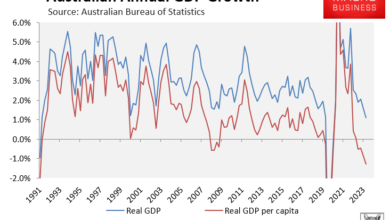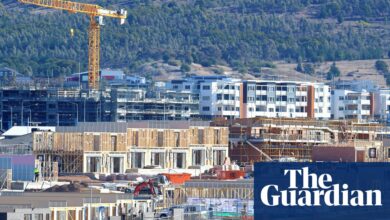‘Made in Australia’ drive aims to shift economy from ‘world’s quarry’ label
The “emu” is a portable brain scanner whose inventors are seeking a global impact, but with a name that proudly suggests its “made in Australia” roots.
Scott Kirkland, co-founder and chief executive of Sydney-based EMVision, said local production of the device was vital if his company were to succeed. “Any critical steps in the manufacturing process [need] to be close to home,” he said. “That control is pivotal.”
But companies such as EMVision have been few and far between in Australia, where manufacturing has taken a back seat to huge primary industries based on resources and agriculture.
Fearing the repercussions for the country’s economic resilience, the government is trying to revitalise manufacturing with a A$15bn (US$9.7bn) fund led by a former Macquarie banker, in a bid to commercialise more Australian innovation. It is part of efforts by countries around the world to boost their manufacturing sectors, partly triggered by the way geopolitical tussles and the Covid-19 pandemic exposed the fragility of global supply chains.
Ed Husic, Australia’s minister for industry and science, said that while Australia’s economy had thrived over the past three decades, recent trade tension with Beijing had shown how dependent some of its largest industries, including coal, timber and wine, were on exports to China. Meanwhile, the pandemic exposed Australia’s reliance on imports in areas such as medicine and car parts.
“This is the biggest investment in manufacturing capabilities in Australia in living memory,” said Husic. “We need to reduce our vulnerability on supply chain shocks.”
Australia’s traditional manufacturing industry has been in sharp decline since the 1970s when the country forged trade relations with China and opened up its economy to imports. Roy Green, an academic with the University of Technology Sydney, said further liberalisation of the economy in the 1980s and 1990s triggered a brief renaissance in export-led advanced manufacturing.
A subsequent combination of a strong Australian dollar and rise in China’s export power triggered a further collapse, as industries including carmaking and steel shrank or disappeared.
Dwindling support for the manufacturing sector has turned Australia into “the world’s quarry” and made it too reliant on the export of raw materials, said Green, who has advised previous governments on industrial policy. “The doctrine of comparative advantage [that] has prevailed for 30 years has suggested that we shouldn’t move up the value chain.”
He cited lithium, a critical material for electric vehicle components of which Australia exports about half of the world’s supply but only captures 0.5 per cent of the value chain.
Australia is also a laggard in spending on research and development, which accounts for only 1.68 per cent of gross domestic product, far below the OECD average.
Labor intends its National Reconstruction Fund to help redress the balance by making targeted investments in maturing companies in sectors including renewable energy, medicine, defence, agriculture and mining. It has appointed Ivan Power, a 20-year Macquarie Group veteran, to run the fund.
Power said Australia could offer a big pool of private capital, including large pension funds. “We have enormous potential, and our job at the NRF is to help Australia’s economy fulfil that potential,” he said.
However, he argued that the taxpayer-funded institution would need to learn from private investors such as Macquarie in assessing risk and understanding the assets it backs. “We need to be practical and sensible to capitalise on that potential, not Pollyannas,” he said.
Michael Climpson, head of manufacturing at Grant Thornton, which compiles an annual report on Australian industry, said small and midsized manufacturers had faced challenges including rising wages and higher energy and freight costs in recent years, but many had continued to grow.
“Australian manufacturing has declined, but those companies that have survived are more resilient,” he said.
Catherine Livingstone, the former chief executive of listed medical devices maker Cochlear and a former chair of government research agency CSIRO, said the country needed to consider whether it had the people, skills base and research infrastructure to match its ambitions for manufacturing — and to focus on what it wanted to deliver.
“You need to be clear what the end is and then work back to the means,” she said.
Christiaan Jordaan, founder and chief executive of Wollongong-based battery technology company Sicona, said that while the grand vision to rebuild the country’s manufacturing prowess was realistic, Australia could not go “toe-to-toe” with China and should instead “find its edge” in areas such as renewable energy.
“We can’t just copy-paste what China is doing. We’ve got to do it differently,” he said.
Sicona, which is developing a silicon composite material that improves the performance of batteries used for electric vehicles and energy grids, is building its first manufacturing facility in the US, where it has tapped into huge funding programmes from the Department of Energy.
Jordaan said his company still intended to establish manufacturing in Australia to supply Asian energy and automotive customers. But he highlighted slow access to grants compared with in the US and a “gap in the middle” between government funding programmes aimed at start-ups and the type of larger businesses that the NRF will target.
“It’s not all moonshine and roses,” he said of Australia’s attempts to meet its manufacturing ambitions.
Husic said he was “under no illusions” as to the scale of the task ahead. “We are not nostalgically trying to resuscitate past glories,” he said. “It’s not about doing everything, it is about doing the important things.”








